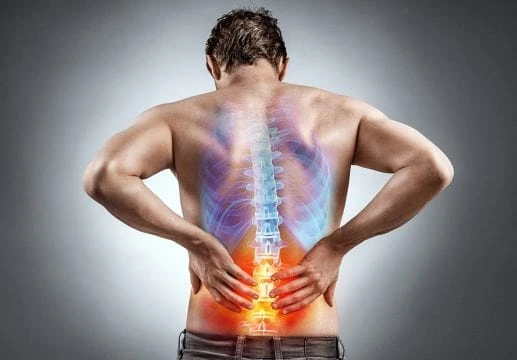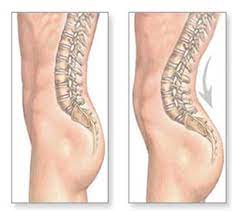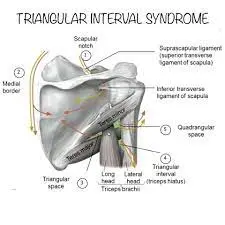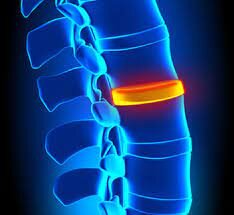Chronic Back Pain
Table of Contents
What is Chronic Back Pain?
Chronic back pain is a persistent and debilitating condition that affects a significant number of individuals worldwide. It is characterized by ongoing discomfort or pain in the upper, middle, or lower back that lasts for three months or longer. Unlike acute back pain, which typically resolves within a few weeks, chronic back pain persists and can significantly impact a person’s quality of life, daily activities, and overall well-being.
Chronic Back Pain refers to pain that you perceive in your lower back. You might also have back stiffness, Reduced movement of the lower back, and problem standing straight.
Low Back Pain (LBP) which is a long period of pain is called Chronic Back Pain.
When the most common Chronic Back Pain (CBP) is caused by muscle strain, muscle injury, or spinal abnormality, it can also be caused by a rheumatic or systemic disease. Pain is considered chronic when it is extant for more than 3 (three) to 4 (four) months.
Chronic Back pain can develop everywhere from the neck to the lower back. The pain can be localized or spread across wide parts and radiate from a central point.
According to the World Health Organization (WHO), it is estimated that around 20% of the global population experiences chronic pain, with back pain being one of the most common types. In many cases, chronic back pain is associated with underlying conditions such as degenerative disc disease, herniated discs, spinal stenosis, osteoarthritis, or muscle strains.
In this discussion, we will explore the causes, risk factors, symptoms, diagnosis, and various treatment approaches for chronic back pain. By understanding this condition more deeply, individuals can empower themselves to make informed decisions and actively participate in their own pain management and recovery process.
Causes of Chronic Back Pain
Low back pain is usual. Almost everyone has back pain at a few times in their life. Often, the perfect cause of the pain cannot be found.
The causes of chronic back pain can be complex and multifactorial. Sedentary lifestyles, poor posture, obesity, lack of exercise, and repetitive activities that strain the back are some of the contributing factors. Additionally, certain risk factors such as age, gender (more common in women), genetics, and occupation can increase the likelihood of developing chronic back pain.
A single event might not have caused your pain. You might have been doing various activities, like lifting the wrong way, for a long time. Then immediately, one simple movement, like reaching for bending from your waist, leads to pain.
Various people with chronic back pain have arthritis. Or they might have extra wear and tear of the spine, which might be due to:
- Heavy use from work or sports
- Injuries or fractures
- Surgery
You might have had a herniated disk, in which the area of the spinal disk is pushed onto nearby nerves. Commonly, the disks provide space and cushion in your spine. If these disks dry out and become thinner and other breakable, you can lose movement in the spine over time.
If the spaces between the spinal nerves and the spinal cord become thinner, this can lead to spinal stenosis. These difficulties are called a degenerative joint or spine disease.
More possible causes of chronic low back pain involve:
- The curvature of the spine, like scoliosis or kyphosis,
- Medical problems, like fibromyalgia or rheumatoid arthritis,
- Piriformis syndrome is a pain disorder involving a muscle in the buttocks called the piriformis muscle
Symptoms of Chronic Back Pain
- Mild to acute pain that doesn’t go beyond
- Dull aching
- Sharp or stabbing pain
- Aching or burning pain
- Stiffness
- Soreness
- Pain that increased to the legs, feet, or hips
Low back pain can diverge from person to person. The pain might be mild, or it can be so acute that you cannot move.
Based on the cause of your back pain, you might also have pain in your leg, hip, or on the bottom of your foot.
Chronic back pain side effects beyond physical discomfort. It can affect mental health, leading to depression, anxiety, and sleep disturbances. It may also limit mobility, disrupt work productivity, and strain personal relationships. Thus, effective management and treatment of chronic back pain are crucial to improving individuals’ quality of life and overall functioning.
Diagnosis and Tests
During the Physical Tests, the medical professional will make an effort to localize the pain and determine how it impacts your mobility.
More tests you have based on your medical history and symptoms.
Tests might involve:
- Blood tests, like a complete blood count and erythrocyte sedimentation rate,
- Computed Tomography Scan (CT scan) of the lower spine,
- MRI (Magnetic resonance imaging) scan of the lower spine,
- Myelogram (X-ray or Computed Tomography Scan (CT scan) of the spine after a dye has been injected into the spinal column),
- X-ray.
Treatment
Addressing chronic back pain typically involves a multidisciplinary approach, including medical interventions, physical therapy, exercise, lifestyle modifications, and psychological support. Treatment options may vary depending on the underlying cause, severity of pain, and individual circumstances. It is important for individuals experiencing chronic back pain to seek appropriate medical evaluation and work closely with healthcare professionals to develop a comprehensive treatment plan tailored to their specific needs.
Your back pain might not go beyond completely, or it might get other painful at times. Learn to take care of your back at home and how to prevent repeat events of back pain. This can assist you to continue with your normal activities.
Your medical officer provider might recommend measures to decrease your pain, involving:
- A back brace to support your back,
- Cold packs and heat therapy,
- Traction
- Physical therapy, involving stretching and strengthening exercises,
- Comforting to learn ways to understand and manage your pain.
These other healthcare providers might also help:
- Massage therapist,
- Anyone who performs acupuncture,
- Anyone who does spinal manipulation (a chiropractor, osteopathic physician, or physical therapist).
If required, your medical officer provider might prescribe drugs to assist with your back pain:
- Aspirin, ibuprofen (Advil), or naproxen (Aleve), which you can buy without a prescription,
- Low doses of prescription medicines,
- Narcotics or opioids when the pain is acute.
If your pain does not increase with medicine, physical therapy, and more treatments, your medical officer provider might recommend an epidural injection.
Spinal surgery is considered only if you have a nerve injury or the cause of the back pain does not heal after a long time.
In a few patients, a spinal cord stimulator can assist decrease back pain.
More treatments that might be recommended if your pain does not increase with medicine and physical therapy involve:
- Spinal surgery is only if you have nerve injury or the cause of your pain does not heal after a long time,
- Spinal cord stimulation, in which a little device sends an electric current to the spine to block pain signals.
Medical Treatment
The guidelines now available stress the importance of a multidisciplinary and multimodal approach in order to decide on a strategy to solve Chronic Low Back Pain (CLBP), not simply reduce symptomatic pain. See Multidisciplinary Care in Pain Management
Treatment for chronic low back pain (CLBP) is grouped into 3 (three) wide categories: monotherapies, multidisciplinary therapy, and reductionism.
- Monotherapies: do not work or have restricted effectiveness (eg, muscle relaxants, non-steroidal anti-inflammatory medicine, analgesics, antidepressants, physiotherapy, manipulative therapy, and surgery).
- Multidisciplinary therapy depends on intensive exercises increases physical function and has humble effects on Chronic Low Back Pain (CLBP).
- The reductionist approach, meaning the chasing of a pathoanatomical diagnosis with the perspective of aim-special treatment, should be executed when a special diagnosis is necessary. Searching for a pathoanatomical diagnosis has been denounced on the grounds that it disregards the psychosocial aspects of chronic pain. Still, advocates of reductionism have continued, as monotherapies and multidisciplinary therapy to date, have not provided a perfect solution to Chronic Low Back Pain (CLBP).
- Imaging: Conventional investigations often do not reveal the cause of pain until joint blocks and discography can identify zygapophysial joint pain (in 20%–40%), sacroiliac joint pain (in about 15% to 20%), and internal disc disruption (in over 40%). Zygapophysial joint pain can be relieved by the radiofrequency neurotomy process emerging for treating sacroiliac joint pain and internal disc disruption.
Multidisciplinary Approach
In patients who have already failed a course of conservative treatment, multidisciplinary rehabilitation programs result in better outcomes with respect to long-term pain and disability compared with usual care or physical treatments. Patients in these programs also have improved odds of being at work compared with patients receiving physical treatment. For other information see – Behavioral pain management of chronic low back pain (CLBP).
Physical Therapy Treatment
Patients with Chronic Back Pain(CBP) should receive information about effective self-care choices and should be guided to remain active (because muscles that do not move can finally become hypersensitive to pain). Assessing the response to therapy is concentrated on improvements in pain, mood, and function. A multidisciplinary approach to treating Chronic Back Pain is a guide. See also Communication in Chronic Back Pain (CBP) Conditions
Therapy consists of:
- Stretching and flexibility exercises: are used to increase the hamstring, quadriceps, piriformis, and hip joint capsule Range Of Motion (ROM). The goal is to decrease pain, improve movement, and increase functional limitations of movement.
- Strengthening and stabilizing the back and abdominal core muscles: Process small improvements in pain and functioning in patients with chronic back pain (CBP). Few however studies demonstrated clinically important and statistically significant differences between intervention and control groups. See Core Muscle Strengthening and The Effectiveness of CoreMuscle Stability Exercise in the Management of Chronic Non-Specific Back Pain
- Massage is now suggested in both the acute and chronic stages of back pain but modalities like electrical nerve stimulation, low-level laser therapy, shortwave diathermy (SWD), and ultrasonography have not been shown to be effective interventions. Exercise focusing on general improvement of strength and cardiovascular endurance is not recommended for optimal outcomes in patients with chronic back pain.
- Cognitive Behavioural Therapy: For patients with nonspecific chronic back pain and other specific patients who have already had complete conservative treatment, a biopsychosocial rehabilitation program might result in positive long-term effects on pain and disability. For other information see CBT Approach to Chronic Back Pain
- Pain Neuroscience Education (PNE): Pain Neuroscience Education (PNE) is a strategy that instructs patients to rethink the way they view pain. Pain Neuroscience Education (PNE) use more stories and metaphors to assist patients reconceptualize their pain experience. Pain Neuroscience Education (PNE) goals are to improve pain thresholds during exercise, reduce fear related to movement, and reduced brain activity in brain regions associated with pain.
Other Options Include:
- Manipulative therapy: found in the latest meta-analysis to be slightly many more effective than sham therapy until no more effective than other forms of care, for example, care by a general practitioner, physiotherapy, or exercises.
- McKenzie Method: Has been shown to be as effective as more exercise therapy. Compared to motor control exercises there is no important various in pain and function scores. Still, patients reported bigger improvement in the sense of recovery in the short period compared to patients who received motor control exercises. This obviously might diverge across different groups of patients.
- Acupuncture is no longer supported by the UK and Belgian guidelines but is still supported by the American guidelines state that acupuncture massage and pressure point massage are minimally helpful for reducing Chronic Back Pain (CBP), with benefits lasting for up to one year.
- Pilates: There is inconsistent evidence that Pilates is effective in reducing pain and disability in people with Chronic Back Pain (CBP), with a lack of long-term follow-up information. The utilization of Pilates was found to increase ongoing Chronic Back Pain (CBP) in patients who received common physiotherapy treatment, the improvement was most common in the female population group.
- Yoga: Evidence in recent years has advised yoga to be an efficacious adjunctive management for chronic back pain (CBP). Yoga has had a positive impact on pain and function results in patients with Chronic Back Pain (CBP). It has been found to have a statistically important difference compared to minimal intervention. Still, results compared to exercise and common physiotherapy are inconsistent. Yoga should be considered as an adjunct to common physiotherapy until further higher-quality studies have been produced.
Prognosis
Most back difficulties get better on their own. Follow your medical officer provider’s advice on treatment and self-care measures.
FAQs
Chronic back pain, on the other hand, can be crucial. Chronic pain is crucial because the symptoms are strong enough to impact your health, mobility, and quality of life for an extended period of time.
These difficulties are called degenerative joint or spine disease. More possible causes of chronic low back pain involve Curvature of the spine, like scoliosis or kyphosis. Medical problems, like fibromyalgia or rheumatoid arthritis.
Acute back pain occurs immediately and typically lasts some days to a few weeks. Subacute back pain can come on immediately or over time and lasts 4 to 12 weeks. Chronic back pain might come on fast or slowly and lasts longer than 12 weeks and occurs daily.
Most people start noticing back pain between the ages of 35 and 60. Until there is no important cause for concern if it begins younger definite people begin to feel the effects of an aging spine as young as 25 to 30.
For chronic pain, heat therapy might be best. Dry heat can be used through a heating pad & moist heat by means of a warm bath or shower. Heat will relax those muscles. Yet if your pain is caused by an injury, ice is the better option.
Physical therapy (PT) is often the best treatment option for Chronic Back Pain (CBP). Increasing your muscle strength and learning how to execute day-to-day activities without stretching your back can resolve your Chronic Back Pain (CBP).
Acute Lower Back Pain (LBP) lasts some days to some weeks, and it tends to resolve itself within some days with proper self-care. In a few patients, it might take up to a few months for the symptoms to disappear completely. Chronic lower back pain lasts for up to 10 weeks or longer.
6 things you should not do when your back hurts
avoid bed rest. When your back hurts, lying down might look like a good plan.
Don’t sleep on your stomach.
Stop lifting heavy objects or bending/twisting your back.
Refrain from repetitive stooping or bending.
Avoid sitting for long periods of time.
Avoid certain exercises.
Usual Causes of Chronic Back Pain
Arthritis of the spine is the gradual thinning of the cartilage inside the spine. Spinal stenosis narrowing of the spinal canal that might lead to nerve pain. Disc disability, like a herniated or bulging disc. Myofascial pain symptom is unexplained muscle pain and tenderness.








2 Comments